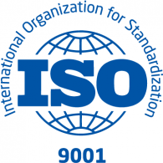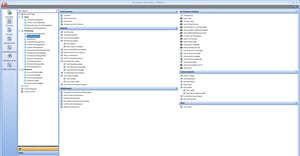+1 (317) 804-2330 | info@ballsystems.com | Blog
+1 (317) 804-2330 | info@ballsystems.com | Blog

Whether you decide to build your next system in-house or hire an integration partner, part of that process should include making sure a quality management system (QMS) is in place to create a reliable and repeatable process.
If you do plan to work with a test integrator, it’s in your interest to ask for a certificate of their QMS. That allows you to better understand their standards. Examples of QMS systems include standards such as ISO 9001-2015, AS9000, and others. A QMS  validates your supplier’s process to ensure the right product is delivered. A properly implemented QMS will enhance consistency, provide robust inspection of processes, allow sub-assembly traceability, and provide project tracking tools such as project travelers in the production workflow. It will verify that the resulting product meets customer and product requirements.
validates your supplier’s process to ensure the right product is delivered. A properly implemented QMS will enhance consistency, provide robust inspection of processes, allow sub-assembly traceability, and provide project tracking tools such as project travelers in the production workflow. It will verify that the resulting product meets customer and product requirements.
Inspection
A robust QMS requires inspection of every assembly – via visual inspection, measurements, or functional testing depending on customer or product requirements. If it’s a top-level test system with multiple sub-assemblies, you will benefit from the inspection and/or testing of all sub-assemblies before they are put into the system to reduce potential errors during final system checkout. This includes ensuring all cables, custom PCBAs, power distribution boxes, mechanical assemblies, and individual test instruments are inspected before they are integrated into a test system. This is essential. Often customers supply an ATP (Acceptance Test Procedure) that defines tests to be completed and data to be captured and submitted with resulting product at the time of shipment. An ATP is developed by the customer or in conjunction with the integrator. When the work is finished, a Certificate of Conformance will be created for each final unit, signifying proper quality checks were performed throughout the manufacturing process.
Traceability
A proper QMS will be designed to ensure quality after product delivery. Even after the most thorough inspections, issues can arise in a given system and corrective action must be taken. One way to track and achieve this is through a non-conformance reporting (NCR) process. This process will track the issue and its resolution. It should also act as a conduit for continual improvement of the company’s internal processes. Since implementing its NCR process, Ball Systems has seen a reduction of common manufacturing errors, increased employee training, improved process refinement, and reduced non-conforming products delivered to the customer.
 A material requirements planning (MRP) system is another critical tool for effective build management and traceability. An MRP system will contain customer orders, all material procurement information and status, shop workflows, build status, and both inbound and outbound shipping. An effective MRP system implementation improves your ability to provide the customer an accurate and up-to-date status throughout all stages of the build process. Real-time statuses on material receipt, custom labels for job kitting, tracking of material changes made during the build phase, and the ability to add notes for repeat builds are important features to have. Ball Systems heavily leverages its MRP system to provide unparalleled flexibility to its customers. The ability to shift workflows and check material status on the fly means Ball Systems can respond flexibly to urgent customer requests in as little as one business day.
A material requirements planning (MRP) system is another critical tool for effective build management and traceability. An MRP system will contain customer orders, all material procurement information and status, shop workflows, build status, and both inbound and outbound shipping. An effective MRP system implementation improves your ability to provide the customer an accurate and up-to-date status throughout all stages of the build process. Real-time statuses on material receipt, custom labels for job kitting, tracking of material changes made during the build phase, and the ability to add notes for repeat builds are important features to have. Ball Systems heavily leverages its MRP system to provide unparalleled flexibility to its customers. The ability to shift workflows and check material status on the fly means Ball Systems can respond flexibly to urgent customer requests in as little as one business day.
Other tools and techniques for traceability can include serializing every assembly and sub-assembly that is built. It’s helpful to have a project traveler document that flows with the tester project through production. Ball Systems utilizes a five-stage production method called KRAQS (Kitting, Ready, Assembly, Quality and Shipping), which includes providing a project traveler and delivering inspection documents for inbound custom mechanicals and final assembly inspection such as cable assemblies, PCB assemblies and test systems. This has helped maintain quality, and as we like to joke, “nothing slips through the KRAQS.”
Without a robust QMS, ensuring quality can be risky. You don’t want to be left guessing. A QMS can help build and validate trust between two businesses working together in the test process because you know your test partner will conform to the standards you need. If you decide to work with an integration partner, let us know if you’d like to discuss the benefits our QMS can bring to your next test system development.
Ball Systems designs, develops, and delivers custom test systems and produces comprehensive build-to-print systems for companies creating or manufacturing critical electronic or electro-mechanical components for automotive, aerospace and defense and consumer appliance applications.
Blog Comments